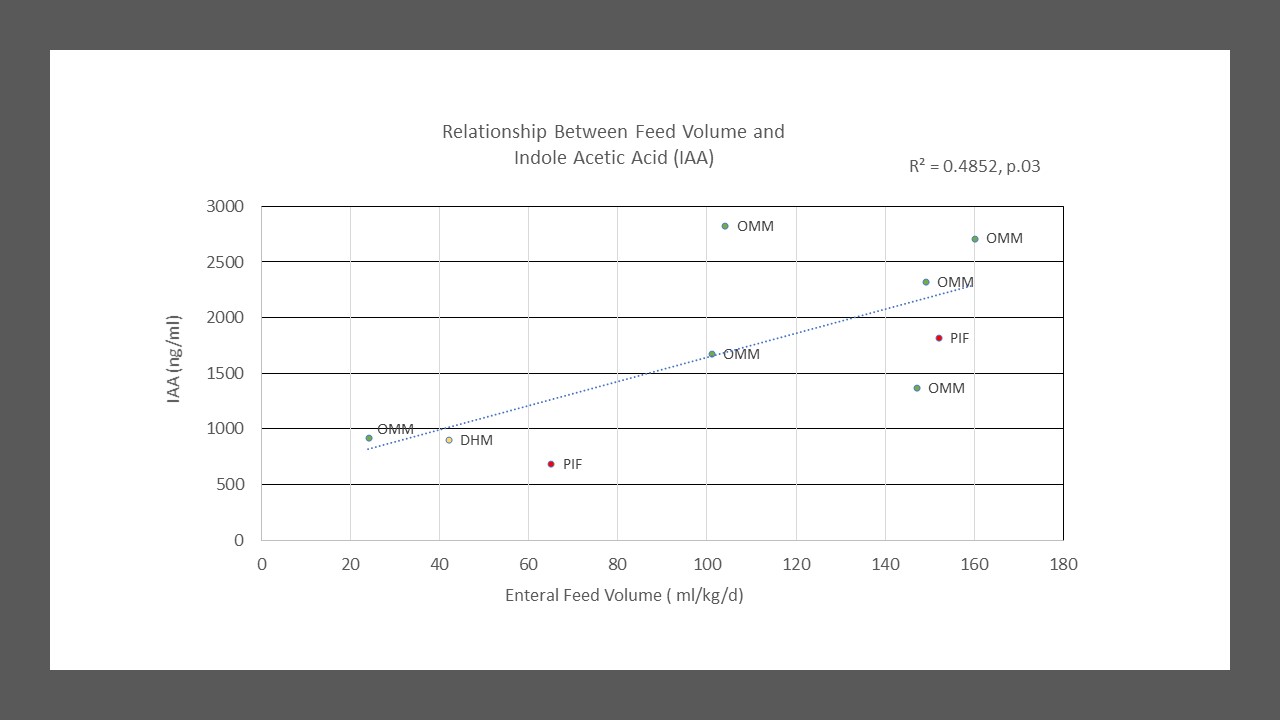Neonatal Fetal Nutrition & Metabolism
Category: Abstract Submission
Neonatal Fetal Nutrition & Metabolism I
272 - Aryl Hydrocarbon Receptor Ligands in Very Low Birth Weight Infants - Response to Parenteral and Enteral Nutrition
Friday, April 22, 2022
6:15 PM - 8:45 PM US MT
Poster Number: 272
Publication Number: 272.119
Publication Number: 272.119
Prabhu S. Parimi, Metro Health Medical Center, Cleveland, OH, United States; Josie Libertucci, McMaster University Michael G. DeGroote School of Medicine, Hamilton, ON, Canada; Afeez Adisa, Case Western Reserve University School of Medicine, Cleveland, OH, United States

Afeez K. Adisa, MD. FWACP, MRCPCH
Fellow, Division of Neonatology
Metro Health Medical Center
Cleveland, Ohio, United States
Presenting Author(s)
Background: Dietary Tryptophan (TRP) is degraded by three interrelated Kynurenine, Serotonin, and indole pathways to generate Aryl Hydrocarbon Receptor (AHR) ligands involved in the regulation of gut immune homeostasis by binding to AHR. The catabolic intermediates of TRP by intestinal epithelial and immune cells produces AHR ligands Kynurenine (Kyn) Kynurenic acid (Kna), while uptake and degradation of dietary TRP by favorable gut microbiota generates indole derivatives. Since Very Low Birth Weight (VLBW) infants receive feeds with varying protein content and amino acid composition and TRP, the effect of diet on AHR ligands [(Own Mother's Milk (OMM) and Donor Human Milk (DHM)] could offer mechansim/s for lower incidence of NEC. We hypothesize that exclusive OMM feeding augments catabolism of TRP to AHR ligands resulting in a higher plasma concentration than those receiving DHM.
Objective: To determine the effect of OMM and DHM on TRP, AHR ligands and other metabolites in VLBW infants
Design/Methods: Newborn infants ≤1500g and ≤ 32 weeks at birth (n=25) were recruited prospectively. Study infants were started on either OMM or DHM (Ni-Q HDM) between 10 -15 ml/kg/d during 2-8 days after birth for 2-7 days, followed by an increase by 10-20 ml/kg/day. Parenteral nutrition was discontinued at ~130 ml/kg/day of enteral feeds. Both OMM and DHM were fortified per protocol. Demographic, clinical and nutritional data of study infants were collected. Isotope dilution tandem mass spectrometry was employed to measure the concentration of metabolites (m/z): Tryptophan (188.07), Kynurenine (192.06), Kynurenic Acid (192.06), Quinolinic Acid (124.03), Serotonin (160.07), Indole Acetic Acid (130.06), and Indole-3-Aldehyde (118.06) at the time of exclusive enteral feeds. We report our pilot data on AHR ligands.
Results: Full enteral OMM feeding resulted in higher plasma concentration of IAA and I3Ald with a positive correlation between enteral feed volume and IAA [(r2 .48, p.03), Figure]. VLBW infants receiving exclusive enteral feeds had lower TRP and higher concentration AHR ligand compared to those receiving predominantly parenteral nutrition (Table). These data suggest that higher enteral dose of TRP (higher enteral feed volume) and OMM resulted in higher plasma concentration of AHR ligands.Conclusion(s): The relatively higher catabolism of TRP to AHR ligands in the OMM group may be due to collective contribution of higher enteral dose of TRP, presence of milk microbiome, human milk oligosaccharides, and favorable impact of OMM on the composition of gut microbiota resulting in increased concentration of AHR ligands in the plasma.
Relationship Between Feed Volume and Indole-3-Acetic Acid (IAA)
Objective: To determine the effect of OMM and DHM on TRP, AHR ligands and other metabolites in VLBW infants
Design/Methods: Newborn infants ≤1500g and ≤ 32 weeks at birth (n=25) were recruited prospectively. Study infants were started on either OMM or DHM (Ni-Q HDM) between 10 -15 ml/kg/d during 2-8 days after birth for 2-7 days, followed by an increase by 10-20 ml/kg/day. Parenteral nutrition was discontinued at ~130 ml/kg/day of enteral feeds. Both OMM and DHM were fortified per protocol. Demographic, clinical and nutritional data of study infants were collected. Isotope dilution tandem mass spectrometry was employed to measure the concentration of metabolites (m/z): Tryptophan (188.07), Kynurenine (192.06), Kynurenic Acid (192.06), Quinolinic Acid (124.03), Serotonin (160.07), Indole Acetic Acid (130.06), and Indole-3-Aldehyde (118.06) at the time of exclusive enteral feeds. We report our pilot data on AHR ligands.
Results: Full enteral OMM feeding resulted in higher plasma concentration of IAA and I3Ald with a positive correlation between enteral feed volume and IAA [(r2 .48, p.03), Figure]. VLBW infants receiving exclusive enteral feeds had lower TRP and higher concentration AHR ligand compared to those receiving predominantly parenteral nutrition (Table). These data suggest that higher enteral dose of TRP (higher enteral feed volume) and OMM resulted in higher plasma concentration of AHR ligands.Conclusion(s): The relatively higher catabolism of TRP to AHR ligands in the OMM group may be due to collective contribution of higher enteral dose of TRP, presence of milk microbiome, human milk oligosaccharides, and favorable impact of OMM on the composition of gut microbiota resulting in increased concentration of AHR ligands in the plasma.
Relationship Between Feed Volume and Indole-3-Acetic Acid (IAA)

